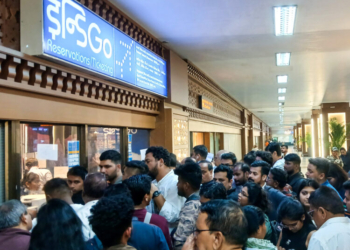New Delhi: Post crossing 67000 points in July ’23, it took nearly 93 sessions or 4.6 months for Sensex to cross the 68000 points mark and the next 1000 point milestone came its way in a day, says Siram BKR, Senior Investment Strategist at Geojit Financial Services.
The latest 5000-point milestone from 64k took place in 107 sessions or 5.3 months.
Sensex crossed the 69000 points milestone for the first time on December 5 with strong FPI flows into Indian Equities that emanated from lowering of US bond yields and ruling central government party’s positive show in key state elections and improving economic macros.
The latest 10000-point milestone from 59k took place in 550 sessions or 27 months.
It took 31.3 years for the Index to climb the 30,000 points milestone, in April ’17. The next 30000 points get added over the next 4.4 years (a rise of 100 per cent).
Sensex Total Returns Index, that includes Dividends as well, crossed 100000 points for the first time on July 14, 2023, to close at 100700 points.
Sensex Total Return Index, stands at 1.53 times the price index, which was 1.06 times in 1999 and 1.41 times when Sensex crossed 30000, the research said.
BSE’s Total Market Capitalisation stood at 343.5 lakh crore, a new high, aided by more new issues and listings coming to the public.
Sensex Average EPS computed by the trailing 12M PE as of November’23, stood at around Rs 2,831, a 7.2 per cent growth YoY, 16.7 per cent CAGR over 2 years, a 100 per cent jump in 3 years, or 26.1 per cent CAGR, with base year being November’20, when the world was just recovering from the China originated Covid-19 pandemic. EPS is estimated to be up 13.1 per cent CAGR in 5 years and 9.2 per cent CAGR in 10 years.
India was generally looked upon as a Bright spot among the major world economies bringing record foreign flows to equities, that helped markets scale higher.
Sensex CAGR as measured by Price Return Index for the past 20 years stood at 13.9 per cent and by Total Return Index it was 15.5 per cent, as of December 5, 2023.
(IANS)















